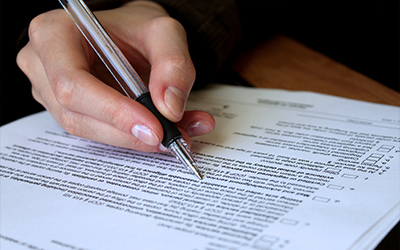Posted on Dec 23, 2013
Image Credit: © Dreamstime.com
Seven Parts of a Dental Practice Appraisal
Main Content A+ A- A
We recently stated that a dental practice valuation is the first step to prepare a practice for sale. Once completed, the next step is to implement a dental practice appraisal. The appraisal complements the valuation with an accurate value of a dental practice.
Maximizing value and substantially increasing the probability of the seller receiving their asking price is the reasoning behind preparing this report which, generally is between seven and ten pages and covers seven key variables of a dental practice.
1 – Summary of the Practice
The summary of the practice provides a history of the business and its owners (dentist or dentists). It is an overview that conveys the length of time a practice has operated, its current and past locations, its areas of specialization, and background information on the owner(s).
2 – Gross Sales and Net Profits
This section of the dental practice appraisal usually includes a four-year history. The information reported is based on a practice’s past three-years of filed tax returns and current year-to-date numbers. The practice’s expenses need to be restated to show the real profit and cash flow. Both personal expenses and non-cash deductions need to be added back to determine its true potential for profits. Examples of personal expenses might include car-leasing payments and medical insurance of the owners; depreciation and amortization would be examples of non-cash deductions.
3 – Patient Base/ Operations Overview
This section is the breakdown of a practice and what comprises it. It includes the number of active patients, which are patients treated within the past two years, and new patients. Both figures combined serve as good indicators for gauging stability, sustainability, and growth potential. Demographic information on patients is also included in this section, such as the age range of the patient base. The average number of patients per week is presented along with the number of customers treated by the dentist and the hygienist.
4 – Details of Office
Specific information on the facility is provided in this section. It includes the amount of square feet, the floor plan of the facility, and the condition of the business’ equipment, both office and medical. Additional information includes the purchase price or the leasing terms of the physical location.
5 – Community Demographics
An overview of the area explains the type of community surrounding the dental practice. Usually, it is cited whether the area is urban, suburban, and small or large. It also may include the population and an economic breakdown of the community, that is, working class, middle-class, upper-middle class, or upper class. Strengths and positive aspects of the area also are included here.
6 – Fee Structure
The income generated from each procedure and the percentage of the total income each procedure represents is the vital content of this section. The fee per procedure also should be included.
7 – Office Hours
The man-hours of the entire staff and the office hours are included here. Office hours of the owner, the associates, the hygienist and staff members of the office are included.
All this information in one report enables perspective buyers to audit the dental practice more efficiently. It is a huge step in pushing the sale forward.

